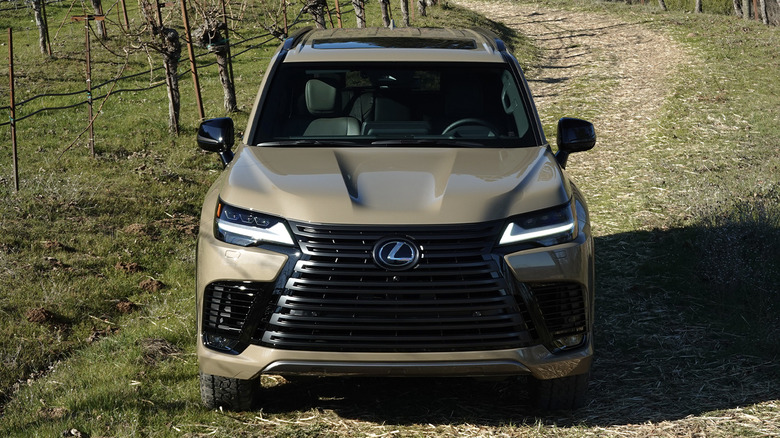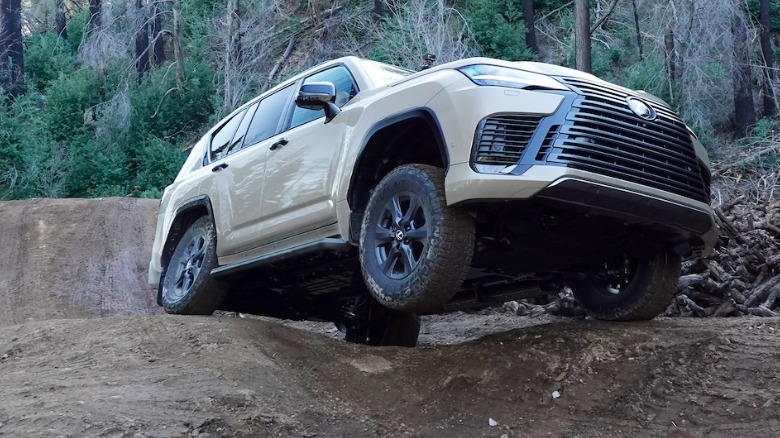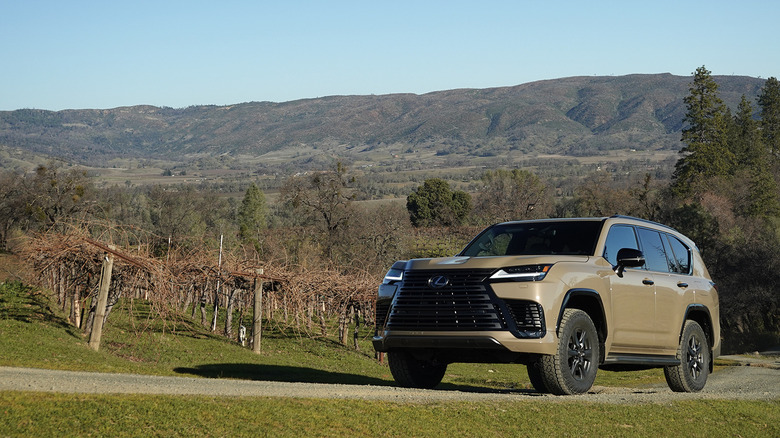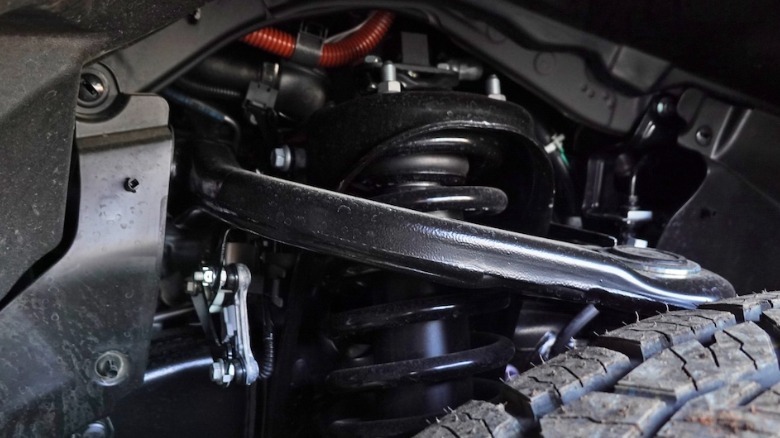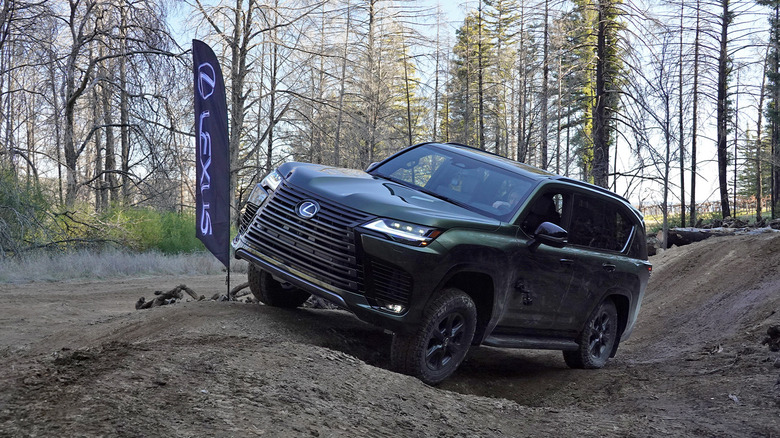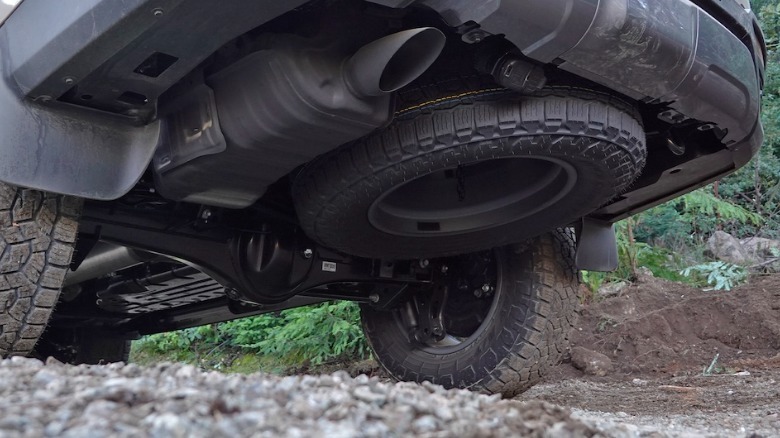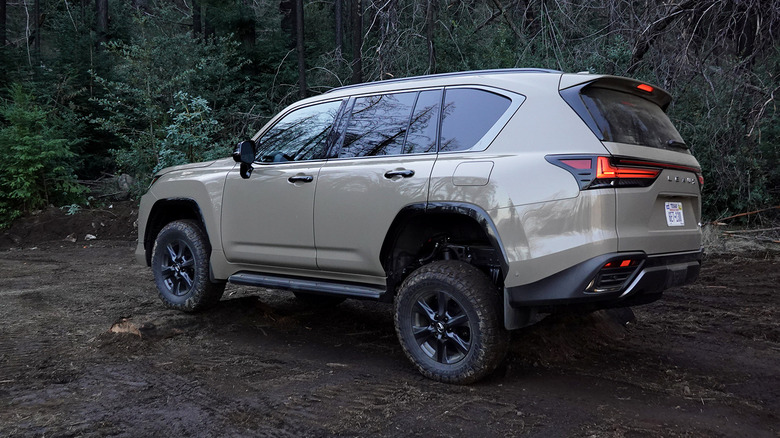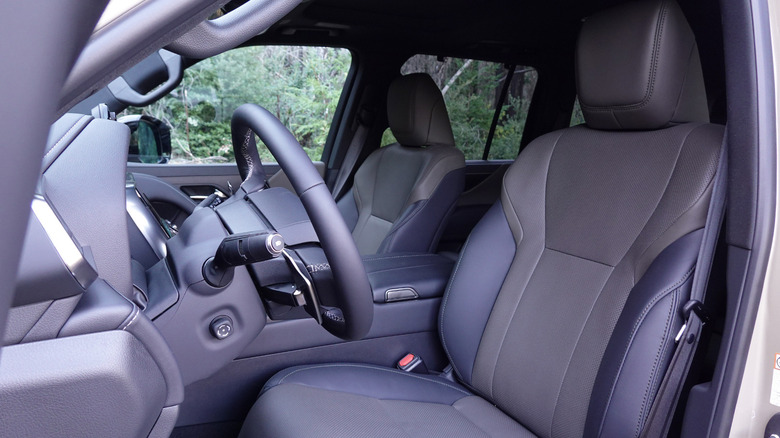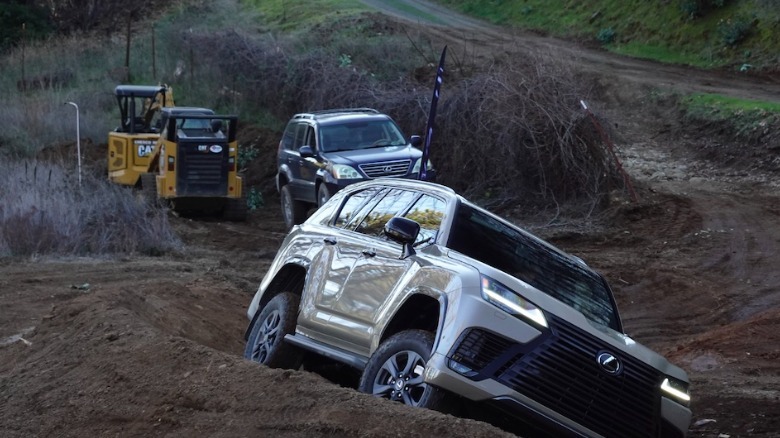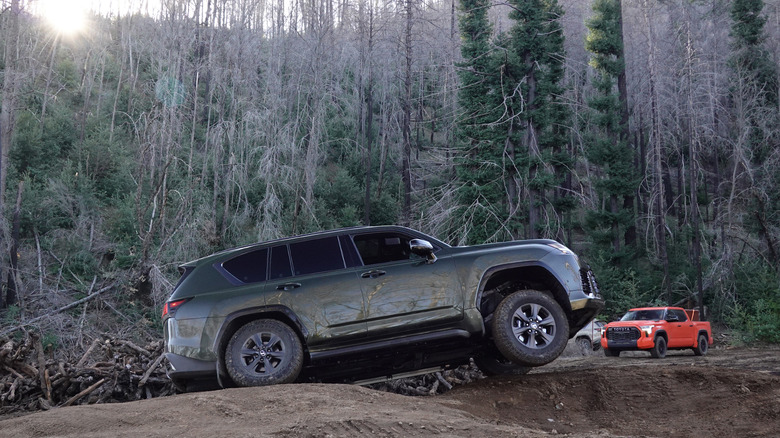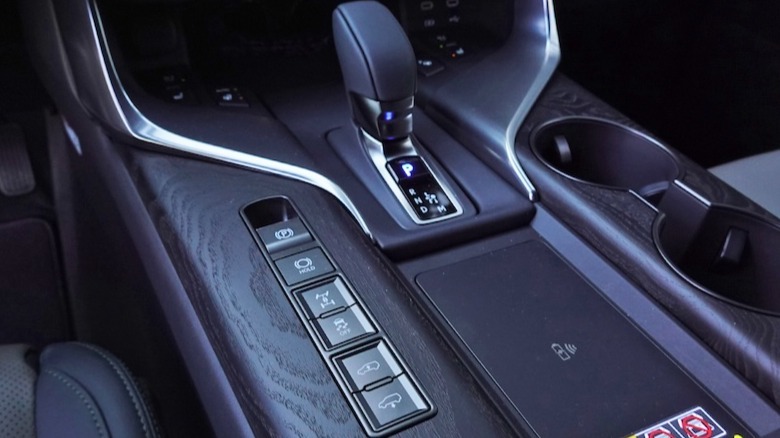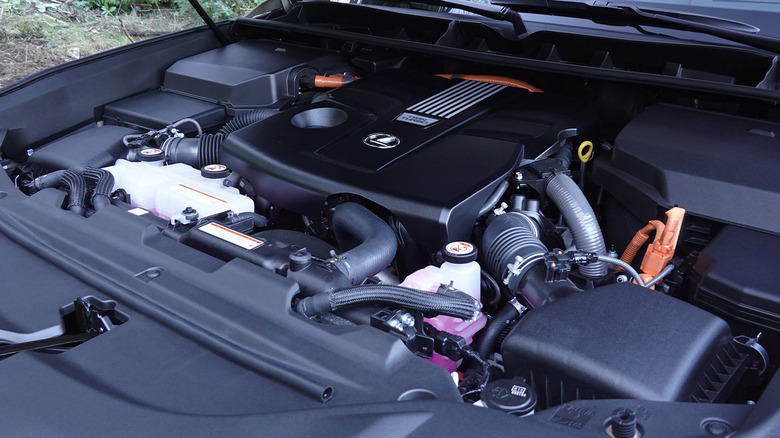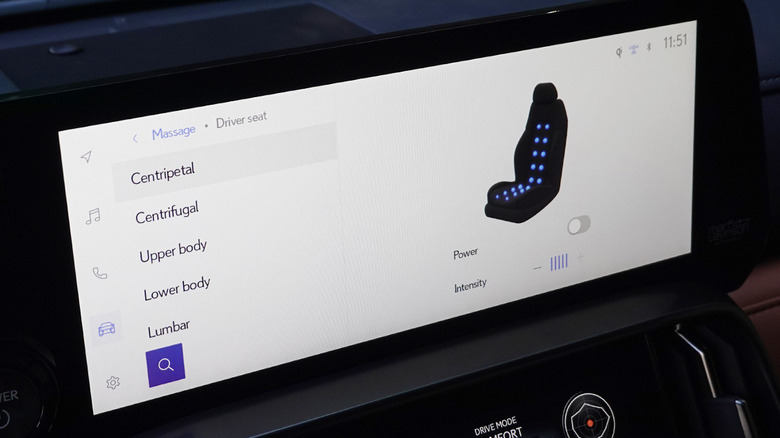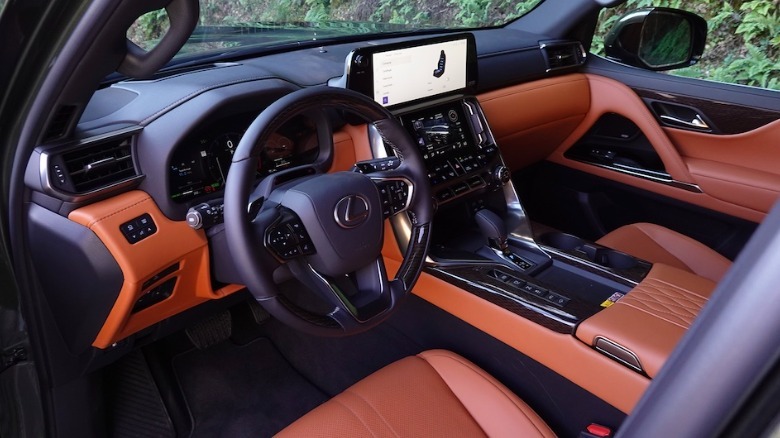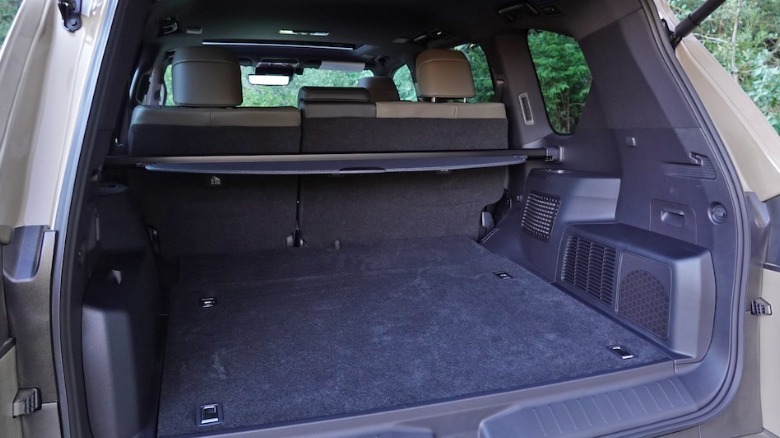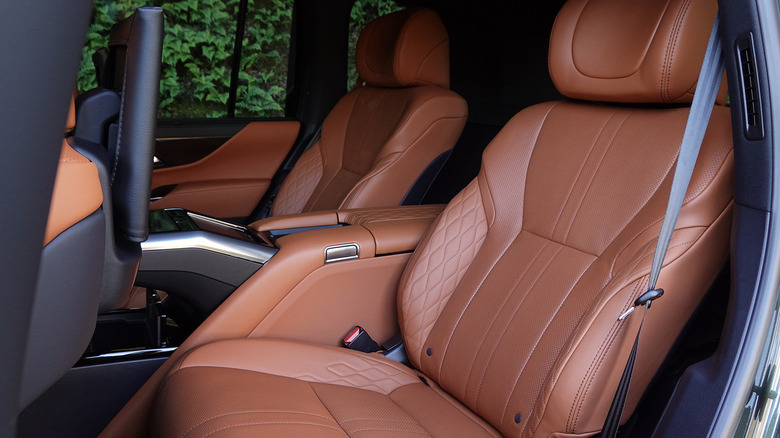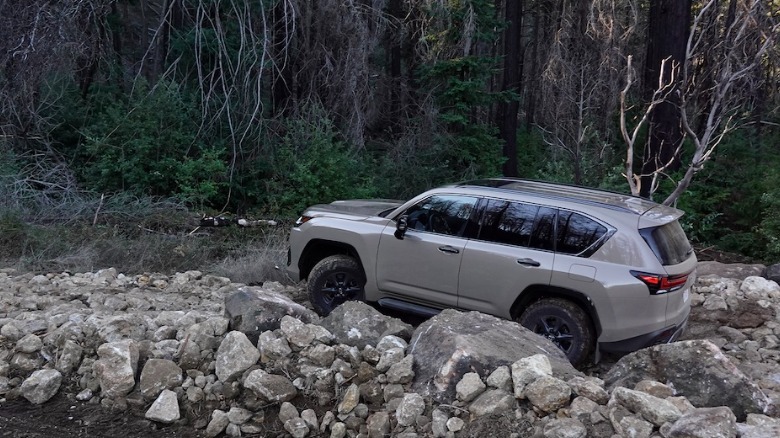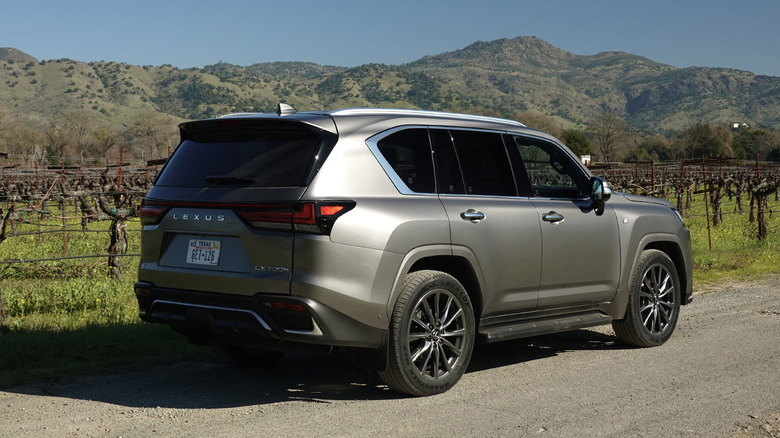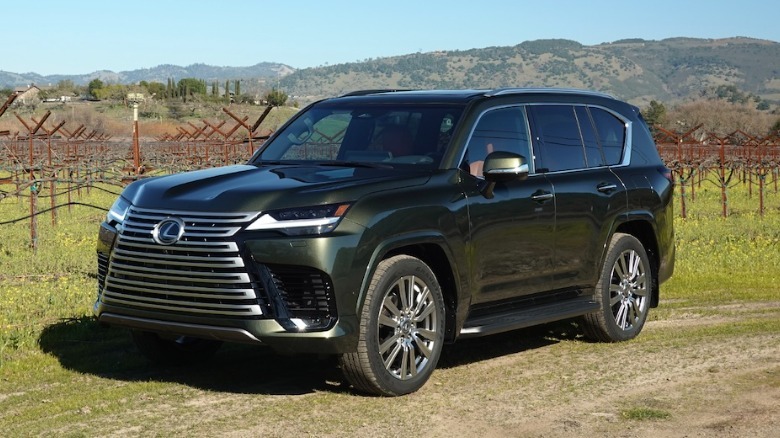2025 Lexus LX 700h First Drive: Hybrid Power, Ultra Luxury, And Six-Figure Status
Fresh off the confusion of Toyota's new 4Runner launch, I joined Lexus for the debut of the new LX 700h in Northern California. This model year marks the first time the LX comes with an available hybrid engine, but also the addition of an Overtrail package to mirror the popular GX 550 trim, including "triple-locked" front, center, and rear differentials for the first time since the 1990s.
The LX skips an Overtrail+ option, though, since the idea around the largest of Lexus SUVs always included the luxury details that the GX's "+" sign added. Instead, the Overtrail LX 700h receives knobby tires on small wheels and revisions to the electronically adjustable suspension, plus black and matte exterior trim.
Of course, adding off-roady goodies to the LX essentially means that Lexus now sells the only J300-based SUV available in the United States, since the revived Land Cruiser and GX both ride on the J250 Prado chassis. But at the LX's price tier, the hybrid probably means more for most consumers, adding power and modestly improved fuel economy to the flagship luxury seven-seater. Lexus still wanted to show off the LX Overtrail's off-roading prowess, though, even though the launch program also included plenty of time in the road-going F Sport Handling and Ultra Luxury trims.
A new package for the off-roading LX
I arrived more excited to learn about the Overtrail. The first detail that stood out was that Lexus resisted the urge to use big wheels, instead sticking with relatively restrained 18-inchers shod in 33-inch Toyo Open Country A/T III tires. In this case, that decision matches well with the LX's hydraulic-based adjustable suspension, which surprisingly uses no airbags—also running counter to the trends of many SUV manufacturers these days.
The question of how that suspension handles the additional weight of a hybrid system also lurked in the back of my head, though. Versus the Toyota Tundra and Sequoia, which use the same battery and motor setup on the same twin-turbocharged 3.5-liter V6, the LX puts out a bit more horsepower at 457 ponies, and a matching 538 lb-ft of torque. The Tundra and Sequoia peak at 437 horsepower, but Lexus claims that the LX's unique tuning and higher minimum octane fuel rating provide more torque throughout the rev range.
Beefed up for rugged reliability
The LX 700h's battery pack also now lives in a waterproof shell, unlike for Tundra or Sequoia, to provide additional confidence while fording rivers or, at least, small streams. Redundancies to the hybrid system also hint at the LX's off-roading priorities, including equipping an alternator alongside the hybrid inverter, so that the 12-volt battery can operate the electric motor's clutch if the hybrid system fails for any reason. Clearly, the legendary reliability of the 1990s LX SUVs fit into the development process from the beginning.
Even driving on two-lane highways to the small off-road course—set up on a stunning vineyard because Napa Valley and Lexus seemingly go hand in hand—I noticed the additional weight of the hybrid system, which contributes about 500 more pounds depending on trim. The Toyos also created a bit more road hum, too, though I wondered whether the engine's lower revs than on an ICE at similar speeds might simply cover up the sound intrusion less.
Electronically adjustable everything
Still, something eminently satisfying about a body-on-frame SUV built as well as the LX shines through. So many 4x4s these days try way too hard to eliminate any hint of body roll with stiff springs and overly thick sway bars. Maybe more customers prefer trucks that ride like cars, but I always appreciated the LX's upright demeanor ever since this generation debuted in 2021.
Out onto the dirt, the LX 700h Overtrail automatically adjusts the ride height even higher than the base setting, which already adds a bit more body clearance versus the non-Overtrail models. I probably noticed the slight lift more because I came in hot after hitting highway speeds, where the suspension pulls fluid out of the dampers to lower the ride height for improved aero, and therefore fuel savings (more on MPGs later).
The whole gamut of features in a luxurious package
In 4-Low, the Overtrail will allow up to four inches of lift above the standard ride height—automatically or via buttons on the center console—plus an additional little bump if the ECU detects that the wheels keep spinning without any actual movement happening. We never aired down, though the Toyos started at a relatively low road pressure of 35 psi, so maybe Lexus purposefully split the middle ground knowing that the short off-road course might require a bit more sidewall flex. Then again, maybe some of the body roll I noticed on-road came about due to the tires as much as the hybrid weight.
The damping on gravel roads absorbed all but the worst runoff ruts, while the hybrid system's low-end grunt rendered the steering wheel paddle shifters somewhat irrelevant. The LX lacks the GX's nifty e-KDSS semi-disconnecting sway bars, though, because the J300 chassis and axles already allows for more articulation than the J250. On a little climb, some off-camber berms, and an artificial elephant track, the Overtrail slowly and steadily trundled along, until I stopped for a second at max flex to show off a wheel up in the air.
Surprising capability from a six-figure SUV
Posing always looks great for pics, but actually reveals the shortcoming of suspension travel. In reality, off-roaders want to keep all four tires on the ground as much as possible. For that, the chunky, rocky trail up next showed off the LX's capabilities better, absorbing clunks and compressions, rarely even spinning the tires too much, and sending minimal shocks through to the steering wheel. We certainly never needed the 4Lo or lockers that the Lexus team prescribed, though in reality, you almost never know when you'll need to triple-lock until the last moment on anything but the most challenging, technical trails—the kind that six-figure SUVs rarely explore.
The Overtrail struggled to go in and out of 4Lo repeatedly, though, and also wanted to keep the rear locker locked. That surprised me, in a modern vehicle with electronic controls—including the nubbins of a gearshifter, which at least Lexus made slightly taller than on the RX. The usual rocking back and forth in neutral or even backing up a few feet in reverse didn't quite do the trick, either, until the computer seemingly just decided to do what I wanted.
Hybrid torque makes a big difference
Back out onto the gravel vineyard roads, I pushed a little harder, going a little faster. Of course, I appreciate the paddle shifters, mostly for low-speed crawling, but the hybrid system also helped the LX's center of gravity seemingly relocate a little lower. Meanwhile, my driver's seat stayed so comfy and all the trucks actually looked a little better with a bit of dirt all over everything—the Overtrail's exclusive "Earth" tan and Nori Green Pearl both serving the shape quite well.
Life in the lap of luxury
Cruising around Napa Valley for the rest of the day, massaging and ventilated seat running full-time, I played with the LX's other electronics. The main touchscreen atop the dash works as well as any other modern infotainment system, though the central screen for climate and vehicle controls desperately deserved a mid-gen facelift. And, though I still prefer some physical buttons, especially for drive mode and climate functions, the LX's center console and dash probably go a bit overboard.
Luckily, even with that large center console, the LX's enormous size allows for plenty of legroom and headroom—especially when I hopped into the Ultra Luxury package's second row to try out the captain chairs. At a stunning $141,350 price point, the Ultra Luxury drops the optional third row, which on other trims does shrink a little because of the hybrid battery pack beneath the rear cargo floor.
As on Land Cruiser and 4Runner—but not GX, at least yet—that battery impinges on trunk space, but because the LX still offers the third row, it gets a little more cramped. A small parcel shelf creates a flat floor in the trunk, though (and don't forget to check fuel capacity, since the 700h's gas tank drops to 17.97 gallons from 21.14 for the non-hybrid 600).
The LX's main selling points
Seven seats stand out as a big selling point for the LX versus the GX. To that end, the larger and more luxurious LX's Overtrail package seems even more purposefully catered to style points in the Whole Foods Parking Lot, even if the triple lockers and suspension can handle more than most customers will ever throw at the rig.
The rest of the world will receive an Overtrail package for the non-hybrid, which the American market will not—a big disappointing, especially since the hybrid 700h's fuel economy doesn't even improve too much, adding just one single solitary MPG combined. The highway rating of 22 MPG holds steady with the 600, while the city fuel economy jumps from 17 to 19 MPG.
This creates a bit of a quandary for anyone who might want to purchase an LX 700h Overtrail for real overlanding: a smaller gas tank, additional complexity, and more weight all sound iffy. That's not to mention that an LX 700h Overtrail starts at $115,350—or almost double a GX 550 Overtrail. Maybe Toyota and Lexus should have jumped for a full-on plug-in hybrid instead. But transitioning the J300 to a plug-in probably required too much development cost, and obviously would have dictated the Overtrail package then becoming available on the ICE LX 600, too.
2025 Lexus LX 700h Verdict
You could well argue that Lexus' F Sport Handling package best shows off the LX 700h's enhancements. Though the weight gains still show up in the more sporting suspension and larger wheels, the uptick in torque throughout the rev range reveals the benefits of hybrid-electric assist. The F Sport Handling also features a Torsen torque-biasing rear differential, rather than lockers, which presumably helped improve the claimed 0-60 time by a half second.
Most potential buyers will probably only notice the subtle losses in ride quality and overall heft on a back-to-back test drive of the LX 600 versus the LX 700h. The difference in the desirable Overtrail trim undoubtedly stand out more, and Lexus expects a 30% take rate to match the GX (which actually creates some artificial scarcity, too). The eco-conscious customer will no doubt love the prospect of a Toyota hybrid in the luxurious LX, though, which in the end, probably best explains why Lexus decided to drop battery-electric assist into an already-impressive flagship SUV.
